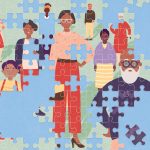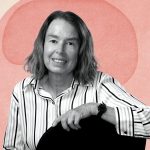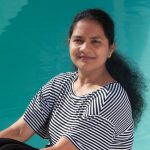Dear Friends,
When historians tell the many stories of the COVID-19 pandemic, one of the main narratives will follow the story of how scientists from across the globe came together in an urgent effort to develop effective vaccines against COVID-19. The actions would lead to not one but several successful vaccines in less than a year and others in development. It is an astonishing scientific achievement unparalleled in history, especially when considering the average time it takes to develop a new vaccine had typically been more than 15 years.
Six months into the COVID-19 vaccination effort, we are beginning to see the impact. As I write this, more than one-third of all Americans are fully vaccinated, and new cases have dropped to levels not seen in over a year. There is a growing optimism that we are turning a corner on the darkest days of the COVID-19 pandemic in the U.S. It is the beginning of the journey that is taking us from shelter-in-place to more normal activities. But it is early, and only the beginning, and what is unfolding in the U.S. has yet to reach a global scale. Most of the world’s population does not have access to vaccines, and the threat of infection and death remains tragically high in countries such as India. As supply increases and distribution expands, a path forward is emerging to control this devastating pandemic.
As this magazine goes to print, planning is underway to welcome back to Salk offices our staff members who have been required to shelter and work from home for the past year. Friends and supporters will be welcomed back to Salk on August 21, for the 25th anniversary of Symphony at Salk. With guest performances by GRAMMY Award-nominated singer, songwriter and actor Josh Groban and the San Diego Symphony, the event will celebrate Salk science and a return to public events. It will also be the first time for many of us to share company in more than a year while we enjoy a gourmet dinner and spectacular evening of entertainment. It will also mark the official re-opening of the Salk campus to the general public.
We are shifting our perspective and adjusting our approach as we pursue answers to many of the biggest questions facing us. At a fundamental level, the goal is to strengthen the natural resilience in our bodies (and our planet) to prevent illness and extend our healthy life span to be free of age-related disease. It is a shift from a focus on the causes of disease to a holistic view on health and understanding of the interdependence of our systems, organs, and cells in shaping our life span. It is pursuing bold Salk science through a different lens. You will hear more about this shift in the months ahead, but our feature story on aging introduces you to our approach.
In the pages of this issue, we also introduce four new members to Salk’s esteemed faculty and interview Assistant Professor Dmitry Lyumkis, who opens up about his scientific influences. We profile Senior Staff Scientist Pamela Maher about her search for novel Alzheimer’s treatments, a mission she shared with her late husband and Salk Professor David Schubert. And we also introduce you to Postdoctoral Fellow Rajasree Kalagiri, who shares her journey from a small town in southern India to the campus of Salk. Today, she works alongside some of her scientific heroes to help unravel the mysteries of cancer.
I am excited about what is ahead for Salk and the bold, audacious science we are exploring. Salk researchers are expanding scientific boundaries while seeking answers to some of our most challenging problems, from climate change to Alzheimer’s. And with your continued support and partnership, we will pursue the future with passion and resolve that builds on our 60 years of success.
Sincerely,

Fred H. Gage
President, Salk Institute

























































